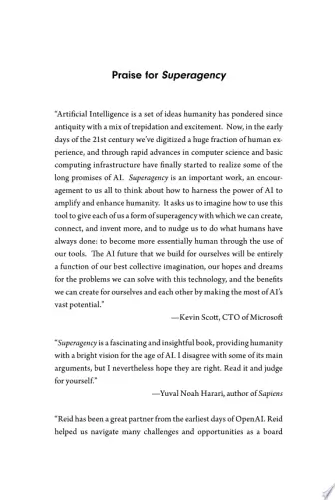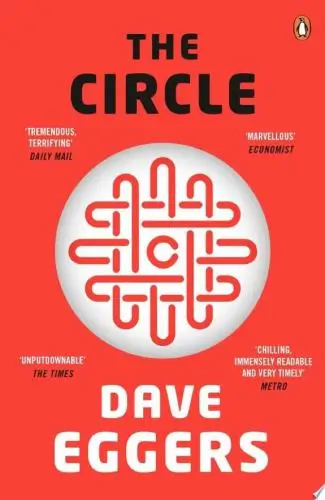
Steve Jobs
What's it about?
Steve Jobs by Walter Isaacson provides a detailed exploration of the life and work of one of the most influential innovators of our era. It sheds light not only on Jobs' life, but also imparts lessons from his extraordinary journey, from the humble beginnings of Apple to the birth of game-changing products like the iPhone. The book reveals the insights gleaned from Jobs' uncompromising quest for excellence and his unique, often contentious approach to leadership, presenting a well-rounded primer on the guiding principles, strategies, and decision-making processes of the tech pioneer.
About the Author
Walter Isaacson is an American author and journalist known for his biographies of historical figures such as Steve Jobs, Albert Einstein, and Leonardo da Vinci. His writing combines deep research with engaging storytelling, focusing on the creativity and innovation that shaped his subjects' contributions to society.
10 Key Ideas of Steve Jobs
Embrace Your Unique Vision and Pursue It Relentlessly
Steve Jobs was known for his unwavering commitment to his vision, often challenging the status quo to create products that revolutionized entire industries.
He believed in the power of following one's intuition and inner voice, even when faced with skepticism or opposition.
This approach not only led to the creation of groundbreaking products like the iPhone and iPad but also cultivated a company culture at Apple that prioritizes innovation and bold thinking.
To apply this tactic, it's crucial to develop a clear, compelling vision for what you want to achieve and pursue it with determination, using feedback and setbacks as opportunities for growth rather than reasons to give up.
Learn DeeperDefine Your Vision: Spend time reflecting on what you're truly passionate about. What change do you want to see in the world or in your life? Write it down in clear, compelling terms.
Trust Your Intuition: When making decisions, listen to your gut feeling along with logical reasoning. If something feels right, even if it's unconventional, give it the weight it deserves in your decision-making process.
Seek Constructive Feedback: Share your vision with trusted peers or mentors and be open to their insights. However, differentiate between feedback that is constructive and criticism that doesn't align with your core values.
Embrace Failure as a Learning Tool: Understand that setbacks are part of the journey. Analyze them to learn what can be improved, then adjust your approach and keep moving forward.
Cultivate a Supportive Environment: Surround yourself with people who encourage and inspire you. A supportive network can provide motivation and insight, helping you to stay focused on your vision.
- Example
If you're developing a new app that aims to revolutionize how people manage their time, your unique vision might be to create an interface that intuitively understands and adapts to the user's habits. Trusting your intuition might mean pursuing a design that experts say won't work, but you feel strongly will resonate with users.
- Example
Imagine you're starting a cafe with a focus on community and sustainability, a concept you're deeply passionate about despite skepticism from others about its profitability. Embracing failure as a learning tool could involve experimenting with different sourcing strategies for sustainable ingredients until you find one that balances cost and quality, reflecting your vision.
Foster a Culture of Excellence and Attention to Detail
Jobs was notorious for his insistence on perfection and attention to detail, believing that excellence in even the smallest components of a product could lead to a superior user experience.
This philosophy extended beyond product design to every aspect of the company, including marketing, packaging, and customer service.
By setting high standards and refusing to compromise on quality, Jobs ensured that Apple products stood out in the market.
Implementing this tactic involves creating an environment where excellence is expected, encouraging team members to take pride in their work, and always striving for improvement.
Learn DeeperSet Clear Quality Standards: Begin by defining what excellence means for your team or project. This could involve setting specific quality benchmarks, timelines, and expected outcomes. Make sure these standards are communicated clearly and understood by everyone involved.
Encourage Attention to Detail: Foster an environment where every detail is considered important. This can be done by rewarding team members who demonstrate a keen eye for detail or by incorporating regular review processes that focus on the finer points of a project.
Promote Continuous Improvement: Encourage your team to always look for ways to improve. This could involve regular brainstorming sessions, workshops, or training programs aimed at enhancing skills and knowledge. Emphasize that there is always room for improvement, no matter how small.
Lead by Example: Demonstrate your commitment to excellence and attention to detail in your own work. By showing that you hold yourself to the same high standards, you'll inspire your team to do the same.
Celebrate Excellence: Recognize and celebrate instances of outstanding work within your team. Highlighting examples of excellence can motivate others and reinforce the importance of maintaining high standards.
- Example
In a software development team, setting clear quality standards might involve defining code documentation practices, establishing performance benchmarks, and requiring thorough testing before deployment. Regular code reviews focusing on these standards can help ensure they are met.
- Example
A marketing team might implement attention to detail by meticulously planning and executing campaigns, from the precision of the messaging to the aesthetics of visuals. Celebrating successful campaigns that resulted from this attention to detail can encourage the team to maintain high standards.
Simplify Products to Amplify User Experience
One of Steve Jobs' core principles was the power of simplicity.
He believed that making products intuitive and easy to use was key to their success.
This meant eliminating unnecessary features, buttons, or steps that could confuse users, focusing instead on a clean, straightforward design that enhanced functionality.
The result was a lineup of devices that customers found delightful and accessible.
To adopt this approach, critically evaluate your products or services from the user's perspective, removing anything that detracts from a seamless experience.
Learn DeeperAudit Your Devices and Apps: Take a moment to look at the technology you use daily. Identify any features or apps you never use or find complicated. Consider simplifying your setup by removing these to streamline your experience.
Apply the Principle of Simplicity in Your Work: Whether you're creating a presentation, designing a product, or writing an email, ask yourself if there's a simpler way to convey your message or design. Remove any unnecessary jargon, steps, or elements that don't add value.
Practice Minimalism in Daily Life: Start applying simplicity beyond technology. This could mean decluttering your living space, simplifying your schedule by focusing on what's truly important, or even simplifying your meals. Notice how reducing complexity in one area can enhance your overall experience.
Feedback Loop: Regularly seek feedback from others on your projects or work. Ask specifically about ease of use and understandability. Use this feedback to make continuous improvements, always aiming for greater simplicity.
- Example
Imagine you're developing a new app. Instead of cramming it with features, focus on the core functionality that meets the user's primary need. Make navigation intuitive, with a clean interface that doesn't overwhelm the user.
- Example
Consider a website redesign project. Simplify the user interface by reducing the number of menu options, ensuring that the most critical information is front and center. Opt for a clean, uncluttered layout that guides visitors naturally through the site, improving their overall experience.
Lead with Passion and Inspire Your Team
Jobs' passion for his work was infectious, inspiring those around him to push the boundaries of what was possible.
He led by example, demonstrating an unwavering commitment to his vision and values.
This leadership style helped cultivate a loyal, highly motivated team capable of achieving remarkable feats.
To emulate Jobs in this regard, it's important to communicate your vision clearly and passionately, showing your team the impact of their work and fostering a sense of shared purpose.
Learn DeeperIdentify Your Passion: Reflect on what drives you and how it aligns with your work. This could involve journaling about your goals, what excites you about your projects, or discussing these aspects with a mentor or colleague.
Communicate Your Vision: Once you've pinpointed your passion, find ways to share this vision with your team. This could be through regular team meetings, inspirational emails, or one-on-one conversations where you discuss the bigger picture and how each team member's work contributes to this goal.
Lead by Example: Demonstrate your commitment to your vision through your actions. This might mean being the first to tackle difficult tasks, showing dedication to quality, or going above and beyond to support your team's efforts.
Foster a Sense of Shared Purpose: Create opportunities for your team to connect with the vision on a personal level. This could involve team-building activities focused on the project's impact, sharing customer feedback that highlights the difference your work makes, or encouraging team members to contribute their own ideas towards the vision.
- Example
A tech startup CEO who regularly shares stories of how their product can change the world, not just through emails and meetings but also by showcasing real-life user testimonials that highlight the product's impact.
- Example
A restaurant manager who passionately talks about the importance of sustainability in food sourcing, leads by example by choosing sustainable suppliers, and involves the team in initiatives like composting and recycling, making them feel part of a bigger mission.
Emphasize the Importance of Design in Product Development
Jobs placed a strong emphasis on the aesthetic and functional aspects of design, understanding that how a product looks and feels is critical to its success.
He worked closely with designers to ensure that every aspect of a product was thoughtfully considered, resulting in iconic, visually appealing devices that also delivered exceptional performance.
To apply this principle, prioritize design from the outset of product development, integrating it into every decision to ensure that form and function are harmoniously balanced.
Learn DeeperStart with Design in Mind: From the very beginning of your project, think about the design. This doesn't just mean how it looks, but also how it functions. Make design considerations a part of every meeting and decision.
Collaborate with Designers Early On: Don't wait until the product is nearly developed to bring in designers. Have them work closely with the development team from the start, ensuring that design and functionality evolve together.
Prioritize User Experience: Always consider how the user will interact with your product. Is it intuitive? Pleasurable? Does it solve a problem in a simple and elegant way? User experience should be at the forefront of your design process.
Iterate Based on Feedback: Design isn't a one-and-done process. Release prototypes, gather feedback, and be willing to go back to the drawing board. This iterative process ensures that the final product truly resonates with users.
- Example
Apple's iPhone: A prime example where design and functionality are seamlessly integrated, resulting in a device that's not only visually appealing but also user-friendly and powerful.
- Example
Dyson vacuum cleaners: Dyson transformed a mundane household appliance into a desirable gadget through innovative design and engineering, focusing on aesthetics, ergonomics, and performance.
Deeper knowledge. Personal growth. Unlocked.
Unlock this book's key ideas and 15M+ more. Learn with quick, impactful summaries.
Read Full SummarySign up and read for free!
Steve Jobs Summary: Common Questions
Experience Personalized Book Summaries, Today!
Discover a new way to gain knowledge, and save time.
Sign up for our 7-day trial now.
No Credit Card Needed

Similar Books

Mathematics for Machine Learning
Marc Peter Deisenroth
Clinical Microbiology
Parslow
Medical Laboratory Science Review
Robert R Harr
Superagency
Reid Hoffman
Artificial Intelligence
Nicola Acocella
Frankenstein
Mary Shelley
The Circle
Dave Eggers
Roitt's Essential Immunology
Peter J. Delves
Laws of UX
Jon Yablonski
Structures
J. GordonTrending Summaries

Peak
Anders Ericsson
Never Split the Difference
Chris Voss
Smart Brevity
Jim VandeHei
The Psychology of Money
Morgan Housel
The First 90 Days
Michael D. Watkins
Atomic Habits
James Clear
Thinking, Fast and Slow
Daniel Kahneman
The Body Keeps the Score
Bessel van der Kolk M.D.
The Power of Regret
Daniel H. Pink
The Compound Effect
Darren HardyNew Books

The ^AOxford Handbook of Job Loss and Job Search
Ute-Christine Klehe PhD
Job Interviews For Dummies®
Joyce Lain Kennedy
Job Interviews In A Week
Alison Straw
Handbook of Career Development
Gideon Arulmani
The Art of Spending Money
Morgan Housel
$100M Offers
Alex Hormozi
A Candle for Kiri
Edna Mae Holm
Principles of Marketing, Global Edition
Gary Armstrong
Serpent Rising: The Kundalini Compendium
Neven Paar
